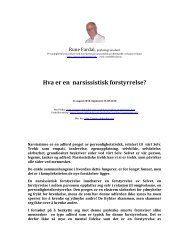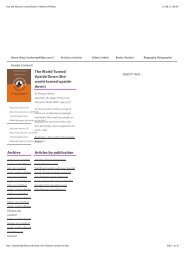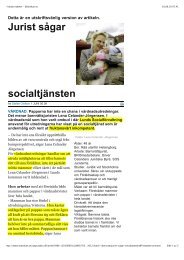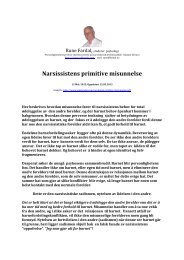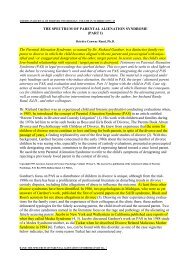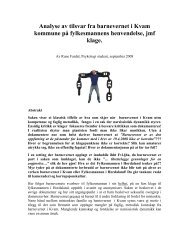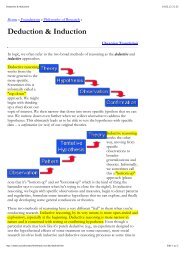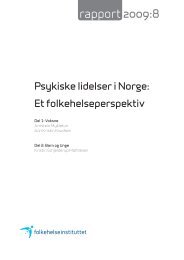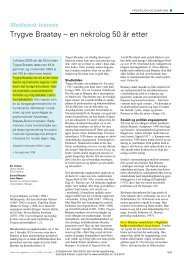The origins of narcissism and narcissistic personality disorder a
The origins of narcissism and narcissistic personality disorder a
The origins of narcissism and narcissistic personality disorder a
You also want an ePaper? Increase the reach of your titles
YUMPU automatically turns print PDFs into web optimized ePapers that Google loves.
THE ORIGINS OF NARCISSISM 65<br />
a decisive biobehavioral shift at age 2 months. <strong>The</strong> social smile is a<br />
well-known indicator <strong>of</strong> this shift.<br />
To cite an example with particular reference for self-other differentiation,<br />
a process crucial to a critique <strong>of</strong> primary <strong>narcissism</strong>, infants<br />
3 months old can distinguish among constant, fixed-ratio, <strong>and</strong> variable<br />
reinforcement schedules (Watson, 1979, 1985). Thus, they can differentiate<br />
self-initiated actions, some <strong>of</strong> which have a 100% probability<br />
<strong>of</strong> success <strong>and</strong> are therefore on a constant reinforcement schedule, from<br />
other-initiated activities, most <strong>of</strong> which are reinforcing on only a variable<br />
or probabilistic basis. <strong>The</strong> ability to distinguish among these contingencies<br />
is but one <strong>of</strong> the ways in which the infant comes to extract<br />
the invariant <strong>of</strong> agency. Stern (1985) provides heuristic empirical evidence<br />
for each <strong>of</strong> the remaining three invariants. Of these, self-affectivity<br />
is especially important because affect forms the core <strong>of</strong> the preverbal<br />
or prereflective self (Emde, 1983), is an amplifier <strong>of</strong> drives<br />
(Tomkins, 1962, 1963), <strong>and</strong>, given the universality <strong>of</strong> affective facial<br />
display (Ekman, Friesen, & Ellsworth, 1972; Izard, 1971), is a primary<br />
medium <strong>of</strong> parent-infant communication during this preverbal period.<br />
Affects form one <strong>of</strong> the self-invariants because the infant learns to<br />
correlate an emotion exhibited as a discrete facial display with an emotion<br />
constituted as a specific pattern <strong>of</strong> autonomic neural firing with a<br />
concomitant experiential tone (Ekman, Levenson, & Friesen, 1983).<br />
Parent-Infant Communication<br />
Early communicative processes. Presymbolic representational capacities<br />
underlie not only the process <strong>of</strong> self-other differentiation but<br />
also the increasingly sophisticated communications within the infantcaregiver<br />
system <strong>of</strong> mutual regulation. Communication between infant<br />
<strong>and</strong> parent is a highly complex affair that requires the infant to perceive<br />
changes in the parent’s behavior <strong>and</strong> affect in a fraction <strong>of</strong> a second<br />
(Beebe, 1982; Beebe, Jaffe, Feldstein, Mays, & Alson, 1985; Beebe &<br />
Stern, 1977; Gianino & Tronick, 1988; Stern, 1971; Tronick, 1989). A<br />
3-month-old infant, for example, when confronted with an image <strong>of</strong><br />
mother’s face speaking, but with her voice delayed by approximately<br />
0.5 second, will perceive the discrepancy between visual <strong>and</strong> auditory<br />
modalities <strong>and</strong> will be disturbed by it (Dodd, 1979). Mother-infant<br />
communication during the preverbal period requires that the infant be<br />
sensitive enough to discover even small temporal discrepancies.




